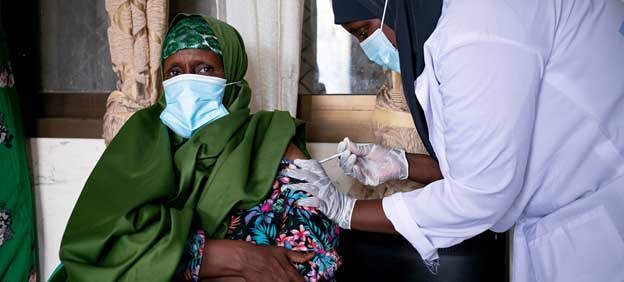Omicron & Developing Countries - Where Threats are the Greatest

GENEVA, Dec 07 (IPS) - On 25 November, news emerged from South Africa of a new COVID-19 variant. It has since been identified as Omicron, a Greek alphabet derivation the World Health Organization (WHO) reserves for virus variants “of concern”.
For now, scientists are still racing to understand Omicron’s virulence. There is, however, growing concern that its high number of mutations make it more transmissible and more resistant to existing vaccines (or previous infections) than other variants.
Currently, these worries are based on preliminary analysis emerging from South Africa, where the new variant was first detected. Further data monitoring will be needed to inform countries about appropriate policy responses. But irrespective of whether Omicron panic is justified, economic shockwaves have run ahead of the disease.
The virus has already sent jitters through financial markets in advanced economies and complicated the policy stance of central bankers in Europe and the USA. In the global South, meanwhile, some regions are likely to be more affected than others. Three key observations underscore where economic risks are the greatest.
The first is a threat of renewed country lockdowns. To date, COVID-19 has tightened the fiscal space available to many developing countries. Recent inflationary pressures have also put paid to further monetary policy loosening.
Lockdowns would be particularly damaging in Latin America, therefore, as macro-financial policies across the continent are approaching an upper-bound.
Although Omicron has not yet been detected in China, its presence there would almost certainly prompt Beijing to double-down on its ‘zero tolerance’ strategy, resulting in local lockdowns and reduced consumption.
If authorities decided to reimpose restrictions comparable to those observed in August 2021, following an outbreak in Nanjing, the toll on growth would be considerable – economists slashed China’s quarterly growth expectations at the time due to city-wide closures.
While other countries lack China’s willingness to choke off economic activity, under-funded health care systems may force developing country governments to impose social distancing to try and limit pressure on hospitals.
Here, countries in Sub-Saharan Africa and South Asia are least well prepared, as vaccine rates remain particularly low (from 1-30 percent).
The second factor relates to trade. Omicron could dampen the recent gains in global trade, which UNCTAD forecasts will increase by 23% in 2021 from the year before, due to the easing of pandemic restrictions and economic stimulus packages.
However, UNCTAD’s forecast did not consider an outbreak of Omicron. A fresh wave of lockdowns would be particularly damaging in East Asia, where intra-industry value chains are deeply connected. With global supply chains still vulnerable, further supply disruptions across China – which accounts for roughly one-fifth of world merchandise exports – would pare back world trade.
Tourism could take a big hit over the coming weeks if governments continue suspending travel routes. Shrinking foreign exchange earnings would be especially hard felt in the Caribbean, the Middle East and North Africa, where tourism makes up a relatively large share of national income, compared to other developing country regions.
The third angle relates to financial market fluctuations. The VIX index, a measure of Wall Street’s expected volatility one month into the future, has risen by 47% since 24 November. Meanwhile, the yield on 10-year US Treasury securities, which move with in line growth and inflation expectations, fell 13% over the same period.
Jitters have been apparent in a broad array of financial market barometers. The prices of developing country currencies and commodities – both considered risky assets – have nosedived over the past two weeks, with oil benchmarks on both sides of the Atlantic down 10-15% since the discovery of Omicron.
A sustained period of falling energy prices would undermine OPEC countries’ net export and fiscal balance positions.
The upshot is that a slump in global risk appetite would undermine developing countries’ growth prospects. What’s more, any shift to higher pandemic spending would lead to a rise in bond yields, causing financial conditions to tighten even further. This would be especially problematic for countries with large external financing costs like Ghana and Turkey.
On the other hand, concerns it may also stall the rebound in advanced economies could delay the normalisation of monetary policy by the US Federal Reserve and the European Central Bank, which would ease the pressure on developing countries to adopt more aggressive monetary tightening.
The COVID-19 crisis continues to expose the disparity in fiscal and monetary firepower available to developed vs. developing economies. And while the severity of Omicron remains in doubt, this latest variant risks further undermining global growth convergence.
Alexander Kozul-Wright is a consultant for the Third World Network (TWN)
Follow @IPSNewsUNBureau
Follow IPS News UN Bureau on Instagram
© Inter Press Service (2021) — All Rights Reserved. Original source: Inter Press Service
 Global Issues
Global Issues